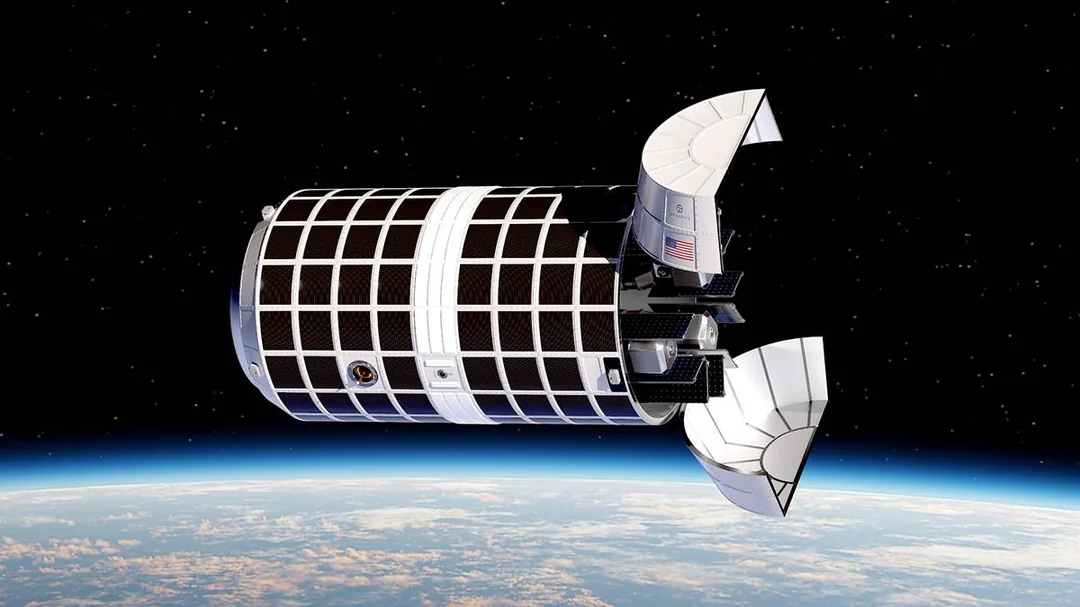Introduction
In the 21st century, space has evolved from a realm of exploration to a potential theater of defense and strategic control. With the growing militarization of low Earth orbit and the technological race among global superpowers, the concept of a Space Force Orbital Warship Carrier is no longer confined to science fiction. It represents the next phase of defense innovation — a combination of aerospace engineering, artificial intelligence, and advanced weapon systems that could redefine how nations protect assets beyond Earth.
This article takes a deep dive into what an orbital warship carrier could be, how the U.S. Space Force might develop such technology, and what its implications mean for global security and the future of warfare in space.
The Vision Behind the Space Force Orbital Warship Carrier
The Space Force, officially established in December 2019, marked the first new branch of the U.S. military in over 70 years. Its creation acknowledged a simple truth — that space is now a contested and vital domain. Satellites are essential to communication, navigation, defense intelligence, and global surveillance. Protecting these assets requires not just monitoring capabilities but also strategic defense platforms in orbit.
An Orbital Warship Carrier would serve as a mobile command and defense platform, orbiting Earth to deploy unmanned spacecraft, drones, and weaponized satellites. Its mission would center around deterrence, protection of space-based infrastructure, and rapid response to potential threats from rival nations.
Design Concept and Architecture
While no official blueprint for a Space Force Orbital Warship Carrier exists today, defense analysts and aerospace engineers envision a platform that blends aircraft carrier principles with orbital mechanics.
1. Structure and Material Engineering
The carrier would likely be modular, composed of ultra-light, high-strength alloys capable of withstanding radiation, micrometeorites, and thermal extremes. Future materials such as graphene composites and self-healing polymers could play a crucial role in its design, ensuring longevity in the vacuum of space.
2. Propulsion Systems
Conventional rocket propulsion would not suffice for maneuvering an orbital carrier. Instead, next-generation propulsion technologies like ion thrusters, nuclear thermal propulsion, or solar-electric engines would provide sustained mobility and orbital stability.
3. Crew and Autonomous Control
While early models might be unmanned, later versions could feature limited crew quarters supported by life-support systems and AI-assisted command modules. The integration of artificial intelligence would enable autonomous decision-making, navigation, and defense responses.
4. Docking Bays and Launch Platforms
Similar to a naval aircraft carrier, an orbital warship carrier would house launch bays for deploying defense satellites, orbital drones, or interceptors. These drones could engage in surveillance, counter-satellite operations, or emergency repair missions.
Technological Foundations of the Orbital Carrier
Developing such a platform would require breakthroughs across multiple scientific disciplines:
- Artificial Intelligence and Quantum Computing: For autonomous mission control, predictive threat detection, and real-time decision-making in space combat scenarios.
- Miniaturized Weapons Systems: Compact, energy-efficient weapons such as directed-energy lasers or kinetic impactors to disable or deter enemy satellites.
- Advanced Communications: Quantum encryption and low-latency laser communication systems to ensure secure command links between the carrier and ground stations.
- Sustainable Energy Systems: Solar arrays, small modular reactors, or hybrid energy solutions to power onboard systems indefinitely.
- Space Manufacturing and Maintenance: On-site 3D printing of spare parts using recycled materials from defunct satellites or space debris.
Strategic Role in Space Defense
The Space Force Orbital Warship Carrier would not exist solely for combat — its real power lies in deterrence and dominance. It could serve multiple defensive and operational roles:
1. Satellite Protection and Repair
With thousands of satellites forming the backbone of modern communication, navigation, and defense systems, an orbital carrier could deploy drones to protect, repair, or replace damaged satellites in real time.
2. Space Traffic and Debris Management
The warship carrier could monitor space debris, deflect potential collision threats, or even capture and recycle space junk — ensuring orbital safety for civilian and military operations alike.
3. Rapid Response Platform
In the event of an attack on national space assets, the carrier could deploy countermeasures, intercept hostile satellites, or neutralize cyber threats through electromagnetic disruption.
4. Global Surveillance and Intelligence
Equipped with advanced imaging sensors, radar arrays, and signal interception systems, the orbital carrier could provide 24/7 surveillance over strategic regions, enhancing intelligence-gathering operations.
Potential Weapons and Defense Systems
The militarization of space raises ethical and political debates, but technological concepts continue to advance rapidly. Possible defense and offense mechanisms for an orbital warship carrier may include:
- Directed-Energy Weapons (DEWs): High-powered lasers or microwaves capable of disabling enemy satellites without physical impact.
- Kinetic Strike Weapons: Small, dense projectiles deployed at high velocity to incapacitate hostile spacecraft.
- Electronic Warfare Suites: Systems designed to jam or intercept enemy communications and radar signals.
- Defensive Shielding: Electromagnetic barriers or plasma shields to protect against incoming projectiles or radiation bursts.
These capabilities would allow the carrier not only to defend itself but also to serve as a command hub for coordinated space-based defense missions.
Global Implications and Strategic Competition
If realized, a Space Force Orbital Warship Carrier would redefine the balance of global power. The U.S. would hold a technological advantage that extends beyond Earth’s atmosphere, potentially sparking a new kind of arms race — one fought not on land or sea, but in orbit.
Other nations, such as China and Russia, have also demonstrated interest in anti-satellite (ASAT) technology and orbital defense systems. The deployment of an American orbital carrier could accelerate their own research and development programs, leading to a new era of strategic deterrence in space.
International space treaties — such as the Outer Space Treaty of 1967 — prohibit the placement of weapons of mass destruction in orbit. However, the treaty’s definitions are vague when it comes to defensive platforms, leaving room for interpretation and innovation.
Challenges to Developing an Orbital Warship Carrier
Despite its futuristic appeal, developing a Space Force Orbital Warship Carrier poses immense scientific, economic, and political challenges.
1. Cost and Feasibility
The estimated cost of building and launching a single carrier could exceed hundreds of billions of dollars, requiring both private-sector partnerships and multi-decade government funding.
2. Engineering and Logistics
Transporting large modular components into orbit would necessitate multiple heavy-lift launches, possibly using systems like SpaceX’s Starship or NASA’s SLS. Orbital assembly would need to be performed autonomously or by robotic units.
3. International Diplomacy
Such a project would likely face resistance from the international community, which may view it as a step toward weaponizing space.
4. Ethical and Environmental Concerns
Space debris, energy weapon use, and orbital pollution remain major concerns. Without proper regulation, an orbital warship carrier could contribute to space clutter and potential ecological damage from re-entry incidents.
The Role of Private Industry in Future Space Defense
Private aerospace companies such as SpaceX, Blue Origin, and Lockheed Martin could play key roles in supporting the Space Force’s orbital ambitions. These companies possess the launch capabilities, material expertise, and innovation pipelines necessary to make large-scale orbital platforms feasible.
Public-private collaboration would likely accelerate R&D, lower costs through reusable launch systems, and expand the Space Force’s reach beyond traditional government capabilities.
A Glimpse Into the Future
By the mid-21st century, space may no longer be just a realm of exploration but an active zone of national defense. An Orbital Warship Carrier could act as a deterrent against aggression, protect satellite networks vital to communication and navigation, and ensure America’s dominance in the final frontier.
Yet, as humanity moves closer to realizing such technology, questions about regulation, ethics, and sustainability become increasingly urgent. Balancing innovation with responsibility will determine whether space becomes a domain of peace or conflict.
Conclusion
The Space Force Orbital Warship Carrier represents one of the boldest concepts in the evolution of military technology. Combining aerospace engineering, AI, and advanced defense systems, it could transform the way nations protect their interests beyond Earth.
While its development remains speculative, the idea embodies the direction in which global defense and space strategy are heading — toward a future where security extends far beyond the atmosphere.
As nations prepare for this new era, the world must decide: will the orbital frontier become a battleground or a beacon of cooperative innovation? The answer may shape the next century of human progress.
FAQs About the Space Force Orbital Warship Carrier
Q1: What is a Space Force Orbital Warship Carrier?
It’s a conceptual space-based defense platform designed to protect U.S. and allied assets in orbit through surveillance, deterrence, and rapid response capabilities.
Q2: Is the U.S. actually building one?
As of now, no official project has been confirmed. However, the Space Force continues to explore technologies that could eventually make such a system possible.
Q3: How would it be powered?
Likely through hybrid systems — combining solar energy, nuclear propulsion, and high-efficiency ion thrusters for sustained operation.
Q4: Would it carry weapons?
Potentially, but primarily for defensive use — such as directed-energy systems designed to protect satellites from attack.
Q5: Could it lead to a space arms race?
Yes, the development of orbital defense carriers could prompt other nations to accelerate similar programs, making international cooperation essential.


